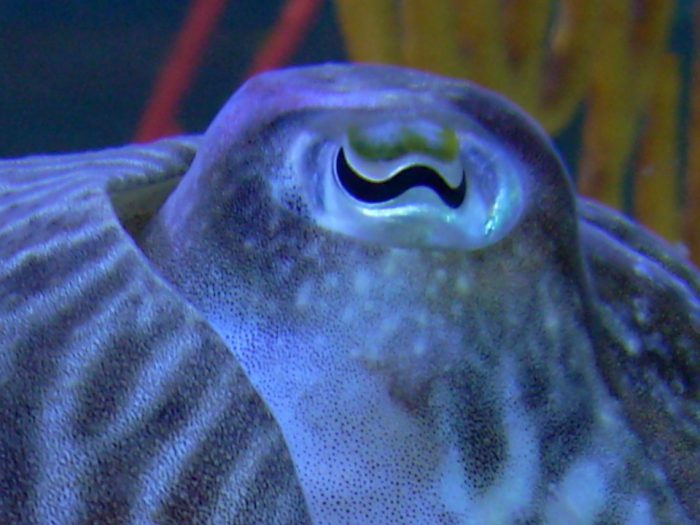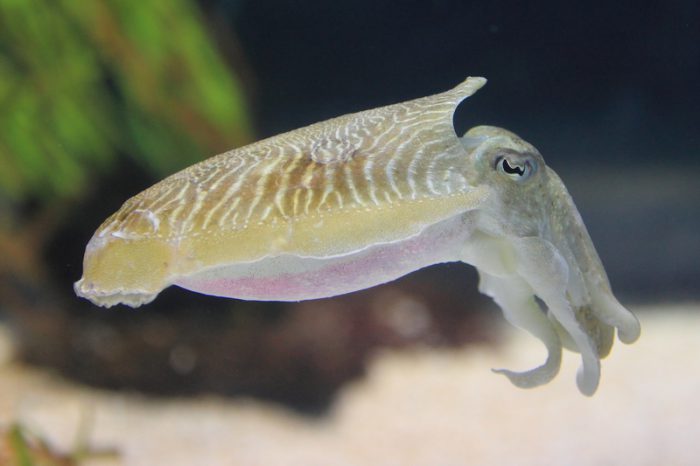The cuttlefish may not get the headlines of the octopus and other squid, but these animals are just as fascinating in their own way.
Like their relatives (all known as cephalopods), they have eight arms, plus two longer tentacles found on all squid. But they are most definitely not the same creatures. Unlike the super squishy octopus, they have an internal shell, called the cuttlebone (no squeezing into thin pipes for cuttlefish!). And then there are their eyes...

(FireFly5/Wikimedia Commons)
Cuttlefish have unique, W-shaped pupils. To focus, these pupils shift position (very different to mammal pupils, which widen or narrow to focus). Like other cephalopods, cuttlefish can see around themselves in any direction. But unlike their relatives, whose eyes remain on the sides of their heads, cuttlefish eyes can also shift position to face forward and give them true stereopsis. This is way that humans see — with two eyes facing forward.
This ability led to a recent experiment: Putting 3D glasses on cuttlefish to test how their vision works!
What is 3D vision?
But before we get to the experiment, a 3D primer.
Stereopsis is what allows us to have 3D vision. Even though our eyes both face in the same direction, they are a few centimetres apart and therefore see slightly different things. (To test this, switch between closing your left and right eyes — some objects will appear to move side to side.)
Our brain uses these slight differences to give us depth perception, which tells us how near or far away something is. Catching a ball in mid-air is one of the hundreds of things that is made much easier thanks to depth perception. It completes our ability to see three dimensions of space: height (up/down), width (left/right), and depth (near/far).
How do 3D glasses work?
(Getty Embed)
3D glasses — the kind that we wear in movie theatres — use our stereopsis to fool us into seeing depth where it doesn't exist (on a flat screen).
Each lens —left and right — is filtered differently to allow certain lightwaves in, while ignoring others, so each eye sees different things. The film is made to have some images for the left eye, some for the right, and some for both.
Cuttlefish goes to the movies
Okay, let's get back to our little cephalopod friends.
Biologist Trevor Wardell wanted to know how similar their vision was to ours. And he used 3D glasses to test it.
Using a dab of super glue and some Velcro, he attached the glasses to a dozen cuttlefish. Then, one at a time, he showed them 3D films featuring shrimp (their favourite food!). The film was designed to make it seem like the shrimp were at different distances.
- +3cm (closer to the cuttlefish from the screen)
- 0cm (the same distance as the screen)
- -1cm (as though the shrimp was past the screen)
In the video below, which proves their stereopsis, you can see how the cuttlefish reach for the shrimp with their tentacles at different distances depending on what the movie shows. Super fascinating!
 Here's looking at you, cuttlefish! (© Lukas Blazek - Dreamstime.com)
Here's looking at you, cuttlefish! (© Lukas Blazek - Dreamstime.com)










I think it was pretty cool 😀